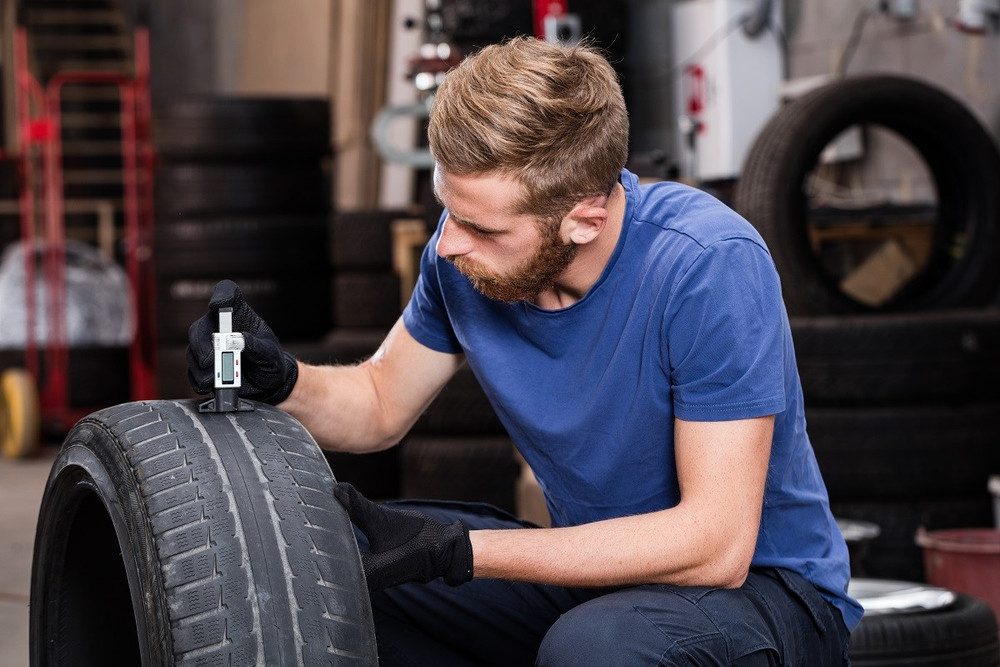Auto Tire Changers: 4 Common Tire Mounting Mistakes to Avoid
30th Jun 2021
If you’re planning to open your own tire service shop, it's critical that you know how to mount a tire properly. Using incorrect mounting techniques can seriously damage the tires and lead to a tire blowout.
Mastering tire mounting also ensures that your customers will be satisfied with your service, even the ones who are finicky with how they want their wheels handled. You’ll eventually gain loyal customers who support and even endorse your shop to people they know.
With that, below are four common mounting mistakes to avoid when using an automatic tire changer.
1.Mounting reverse mount wheels the wrong way
Reverse mount wheels have become quite popular these days. They’re commonly used for lowered cars since the low profile can damage the tire beads.
The first step to handling reverse mount wheels correctly is to learn how to identify them. They have a drop section in the rim profile and a little ridge going around the outer lip that makes it thicker than the inside lip.
When trying to figure out how to avoid tire mounting mistakes, reverse mount wheels can trip people up. It’s important to clamp reversed drop center wheels upside down when mounting and demounting. Otherwise, you run the risk of damaging your expensive tires and rims. Don’t allow for the risk of rust, and take precautions like using jaw protection when clamping the tires. This will make for a smooth installation that you don’t have to re-do.
2. Placing the bead breaker incorrectly
Are you aware of the complications an incorrectly placed bead breaker can cause? The number one issue is that your tire will be damaged, especially if a thick bead or other elements stop the rim from fitting properly to the mount head. Improper bead placement can even affect the tire pressure monitoring system (TPMS), which can cause more issues in the long run with tire pressure. You can also risk scratching the wheel if you’re not delicate when clamping, though, so it’s important to move slowly through this process. It’s possible that you won’t run into any of these issues, but it’s always a possibility when it comes to mounting your tire.
3. Not seeing the TPMS
If the TPMS sensor is located at the valve, there's always a risk of damage. Because of this risk, you have to know what your TPMS looks like, so you don’t damage it when mounting. They’re usually attached to the valve or on the inner wall of the wheel. You can also test the TPMS sensor functionality prior to service to protect against potential damage.
TPMS damage can be a result of technicians neglecting to identify sensor placement before tire demounting or mounting. Whether you’re working with this at home or taking your tires into a shop, a check of the sensor beforehand can set your mind at ease that the sensor was working properly before the tires were mounted. If it’s your first time learning how to avoid tire mounting mistakes, this is a good place to start. Get familiar with the parts of your wheel before you dive in head first. That will help limit any potential for damage.
4. Not using the right amount of lubricant
You need to use lubricant both when mounting and dismounting tires. Be sure to apply enough lubricant so that the casing slides on smoothly onto the rim. You can’t put too much, though, because it might cause vibration problems and tire-to-wheel slippage.
Apply the lube on the bead seat, the inner toe area of the tire bead, and the balcony of the wheel drop center.
With the right auto tire changer, you’ll feel prepared and confident about your next tire installation. You’ll want to invest in a changer that has a tilt mechanism, a large turntable, and a reverse mount adapter, just in case that applies to your tires. With these accessories and your new knowledge in hand, you won’t have to wonder how to avoid tire mounting mistakes anymore.
Looking for tire changers for your shop?
For over 10 years, JMC Automotive Equipment has been supplying auto shop owners and car hobbyists with high-quality products. We carry a wide variety of auto tire changers from different manufacturers, such as Corghi, Cemb, and Ranger Tire Changers.
Fill out our online form to discuss your tire service equipment needs.

